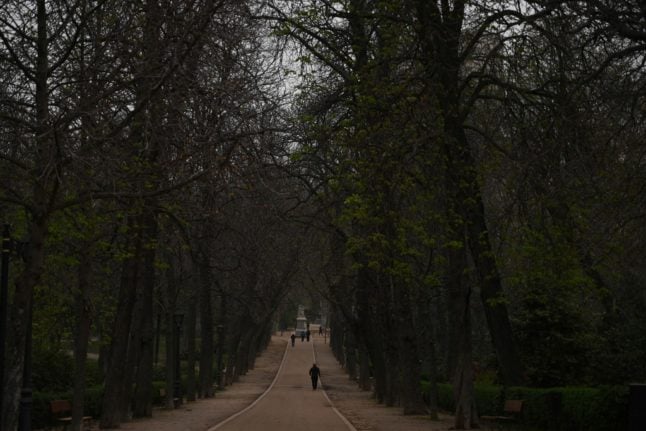It would seem that the world is getting stranger by the minute.
Now a cloud of dust is covering parts of Switzerland, giving it an unusual yellow glow, with the normally blue sky taking on an orange-brown hue.
If you are concerned that this clash of yellow and blue in the sky has something to do with the war in Ukraine, be reassured: the dust cloud comes from northwest Africa, according to the Federal Meteorological Office.
Reader question: Is Switzerland’s Sahara dust cloud dangerous?
The reason: a depression over Morocco and Algeria, which raises the fine sand of the Sahara desert, which heads towards Switzerland.
Début de journée en mode #sepia sur l'Ouest du pays, à la faveur de l'arrivée du panache de #poussièressahariennes.
Photo : webcam de la Dôle à 7h40 locales ce matin #MeteoSuisse pic.twitter.com/aPyLHmIqco— dan (@exhaleart) March 15, 2022
‘Blood rain’
Despite the ominous name, “blood rain” is simply what happens when rainwater is combined with the desert dust. It’s a natural phenomenon — though admittedly not that natural for Switzerland.
Und, weil es so schön war, gleich noch ein Bild vom #Sonnenaufgang. #Saharastaub braucht übrigens nur wenige Tage von der #Sahara bis zur #Schweiz. #heschgwüsst 🤓 ^sl pic.twitter.com/mNHVOMUJ7w
— SRF Meteo (@srfmeteo) April 21, 2020
All this is actually good news as it means the end of winter and beginning of spring and warm weather, according to Klaus Marquardt, a meteorologist at Meteonews.
“Wednesday could be the hottest day of the year so far. The bar of 20 degrees will even be crossed in the Rhine valley and in Basel”.
#Saharastaub in #Basel, #Schweiz und im angrenzenden #Elsass, #Frankreich sowie in #BadenWuerttemberg, #Deutschland.#Sahara #dust #sand #SaharanDust #Staub #sepia #Stimmung #Himmel pic.twitter.com/TXCUHQTnZR
— Chicken3gg (@Chicken3gg) March 15, 2022
However, it is necessary to see to what extent the Sahara cloud will influence the evolution of temperatures, Marquardt said.
“Because weather models don’t account for desert dust, it could end up being cooler than originally thought.”
That’s because In the presence of a lot of dust, solar radiation can be attenuated.
Farbiges Wetter-Spektakel: Die Sahara-Wolke ist da! https://t.co/E3WvhmLo4C
— Blick (@Blickch) March 15, 2022
The other outlook, however, is promising: Thursday too, apart from a few areas of high fog, the weather will remain quite sunny and the temperature will be around 16 degrees.
On Friday it will be slightly cooler, but the weather will probably also be quite sunny. The forecast for Saturday is similar, Marquardt said.



 Please whitelist us to continue reading.
Please whitelist us to continue reading.
Member comments